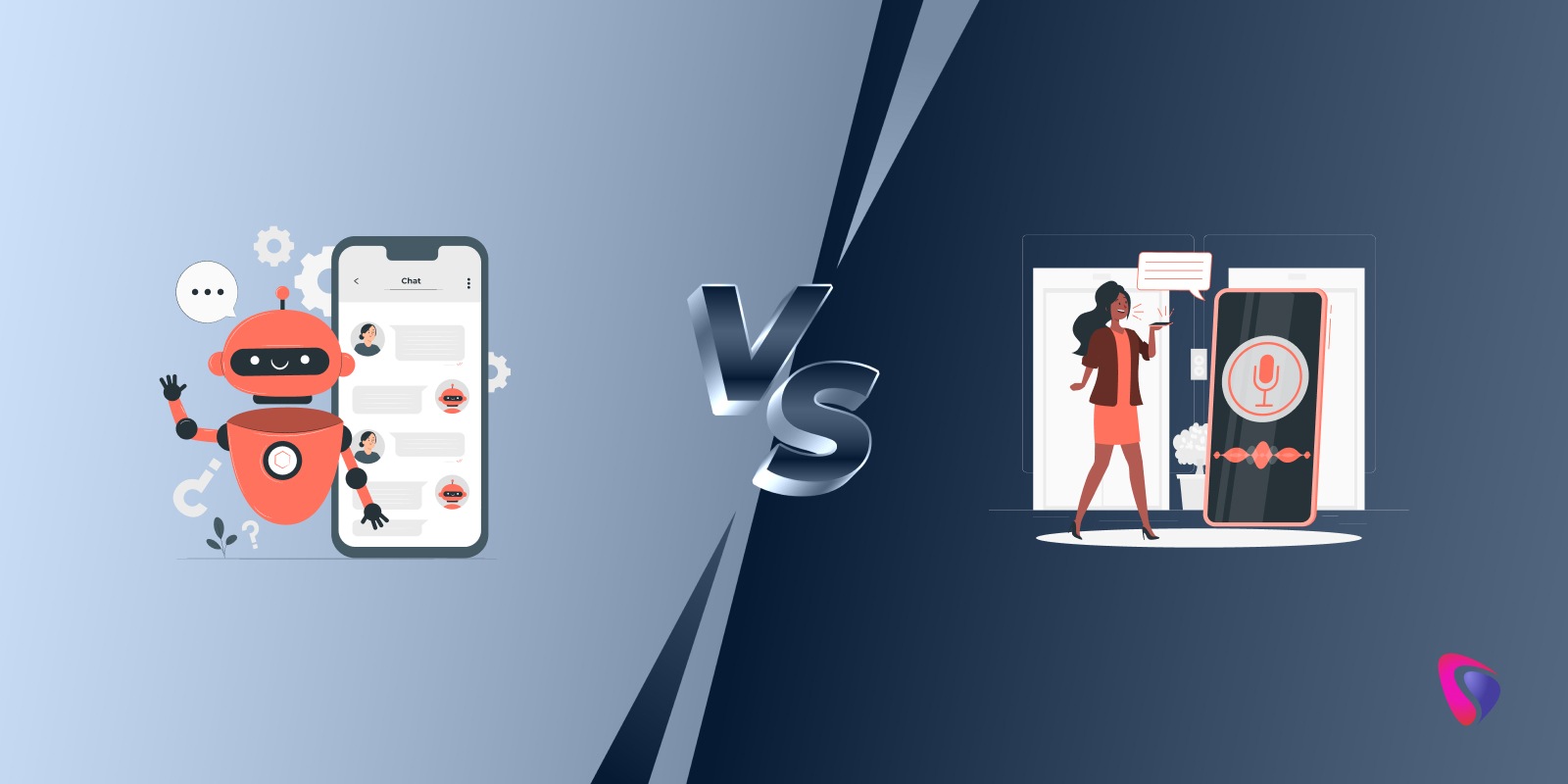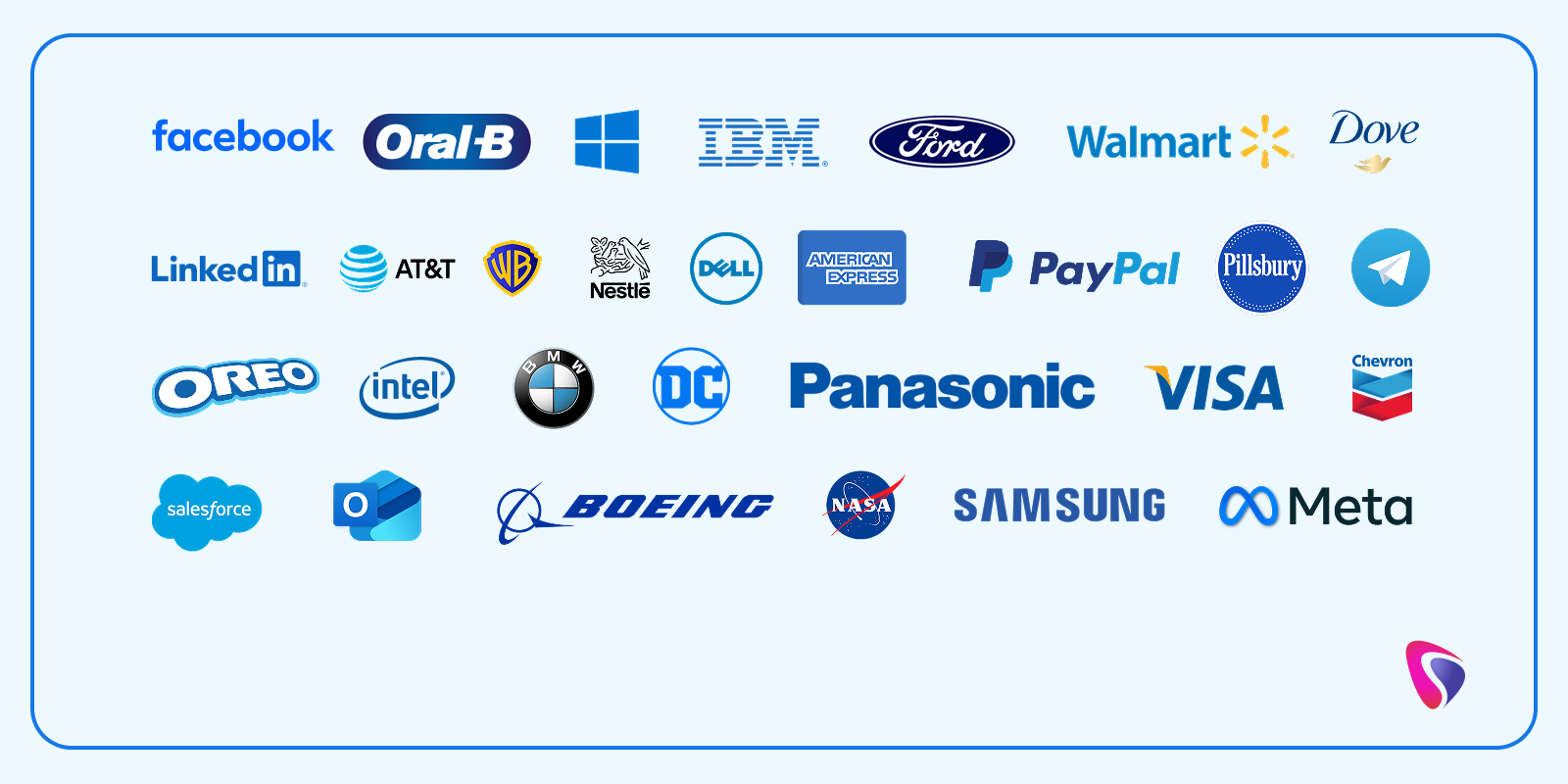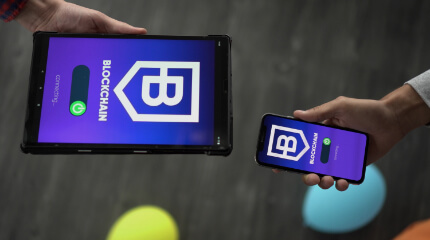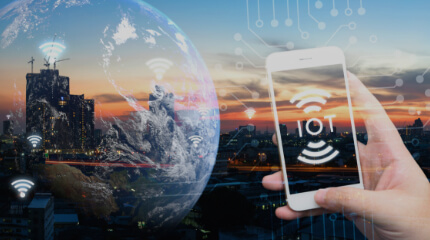
Chatbots and virtual assistants are not new. In fact, businesses have been using them for decades, but their capabilities have evolved over the years. The primary drivers for automating various business processes stemmed from the abundance of data. Managing so much data manually wasn’t possible, which led to the birth of chatbots and AI assistants.
The AI chatbot market is expected to grow exponentially from $8.98 billion in 2025 to reach $103.84 billion by 2034. Businesses want to provide 24/7 customer service without incurring additional costs. Chatbots are perfect for that. On the other hand, businesses use AI virtual assistants to perform repetitive tasks, respond to voice and text commands, while integrating with other tools.
AI-powered chatbots also possess similar capabilities to virtual assistants enhanced with AI capabilities. At first glance, it may seem like these two are almost the same, which may confuse businesses and users. However, it is important to understand the differences between them to utilize their fullest capabilities. This blog is not just a plain AI chatbot vs. AI virtual assistants comparison. It delves into their features, use cases, challenges, and more. Let’s get started.
What is an AI Chatbot?
As the name suggests, an AI chatbot is a chatbot infused with artificial intelligence capabilities. Companies often develop AI-enhanced chatbots to interact with potential customers, often during out-of-office hours. Hiring employees to provide customer service outside of work hours can cause a significant strain on the company’s finances.
AI chatbots are designed considering user convenience. Most users type in their queries or questions, while others may use voice to get answers. An AI-powered chatbot can naturally respond to both, just like most humans talk to each other. Such natural responses that mimic human speech patterns are a key differentiator between AI chatbots from traditional chatbots.
These AI chatbots provide quick, automated support by answering common FAQs, providing instructions to use products/services, handling transactions, and collecting vital information. Due to these limitless benefits, banking, finance, e-commerce, healthcare, and other businesses use them a lot. Despite their expressive communication and other advanced capabilities, AI chatbots are rule-based and have certain limitations, which is a topic for another blog.
What is an AI-Powered Virtual Assistant?
Sometimes, people want more assistance and answers to questions may not be enough. This is where AI assistants or AI-powered virtual assistants come into the picture. Virtual assistants with AI capabilities can perform several repetitive tasks, such as appointment and calendar scheduling, and data entry. It can also conduct detailed, real-time research, provide personalized recommendations, and control devices with sensors.
Similar to AI-powered chatbots, virtual assistants learn from past interactions, user behavior, and preferences to provide tailored responses and assistance to users. Having said that, AI virtual assistants use NLP and ML, like AI chatbots, but they throw in other AI capabilities into the mix, such as task automation, contextual understanding, and personalization. Last but not least, they integrate effectively with external tools and systems to help companies achieve desired goals.
3 Categories of AI Chatbots
Every company is different, and so are its business needs and goals. This gave rise to AI-powered chatbots with varying features and capabilities. Below is a brief explanation of the same.
1. Technology-Based Chatbots
- Rule-Based Chatbots - Answer customer queries while following fixed rules and scripts.
- Retrieval-Based Chatbots - Answers using pre-defined yet most relevant responses.
- Generative AI Chatbots - Leverage LLMs and machine learning to provide human-like answers.
- Hybrid Chatbots - Combines rule-based and generative AI to facilitate structured and human-like conversations.
2. Use Case-Based
- Customer Support Bots - Answer simple FAQs, track orders, and handle customer complaints.
- Business Process Bots - Automates HR, IT, helpdesk, and lead generation workflows.
- Educational Bots - Educational bots provide tutoring, explanations of complex subjects and topics while conducting quizzes.
- Personal Assistant Bots - Manages tasks like scheduling, setting reminders, and sending emails.
- Conversational Bots - Provide casual and entertainment-based services such as casual chats or companionship.
- Healthcare Bots - Provides timely reminders for taking medicines, scheduling appointments, and checking symptoms.
3. Interaction Mode
- Text-Based Chatbots - Text-based chatbots are ideal for websites, apps, and messaging platforms.
- Voice-Powered Chatbots - Examples include smart speakers and IVR systems.
- Multi-Modal Chatbots - Combines the capabilities of text, voice, images, and videos to interact with users.
Confused about which type of AI chatbot is best for your business? Speak to a reputed AI development service company near you for detailed guidance and information.
8 Types of AI Virtual Assistants
Many types of AI virtual assistants are available in the market. The different types of AI virtual assistants are bifurcated based on their purpose, design, and complexity. The different categories of AI virtual assistants are as follows.
1. Personal Productivity Assistants
Personal productivity assistants help users manage daily tasks, time, and personal schedules. Its key features include calendar management, voice search and commands, and simple FAQs.
2. Customer Support Virtual Assistants
Automate customer service interactions. Its key features include 24/7 query handling, FAQs and automation, live chats, and multi-channel support.
3. Enterprise Virtual Assistants
Provides robust employee and workflow support. For example, enterprise virtual assistants can help employees find information, provide domain-specific assistance (payroll and onboarding), or provide IT helpdesk support.
4. Healthcare Virtual Assistants
Provide medical guidance, appointment scheduling, and patient engagement. Key features include symptom checking and triage, medical reminders, telemedicine support, and patient monitoring.
5. E-Commerce Virtual Assistants
The main goal of e-commerce virtual assistants is to assist shoppers with the purchase process and increase conversions. Key features include order tracking, cart recovery, personalized product recommendations, upselling, and cross-selling.
6. Specialized Assistants
Specialized or niche assistants focus on a single domain or task. Key features include bespoke task automation and delivering personalized experiences.
7. Conversational AI Companions
Conversational AI companions are not designed to achieve business-specific goals. These AI companions converse like humans, possess human intelligence to a certain degree, and offer personalized responses over time. All they do is interact, provide emotional support, and companionship.
8. Multi-Modal Virtual Assistants
Multi-modal virtual assistants are not limited to voice and text-based support. They use a combination of voice, vision, and actions to help, resulting in a more natural, context-aware assistance.
Whether it's building an AI assistant or business chatbots, companies need specialized guidance and support. Consult an artificial intelligence development company for AI chatbot/virtual assistant implementation and related support.
Chatbots Vs. AI Assistants - Key Feature Comparison
As stated above, chatbots and AI may seem similar to the general population, but they are different in many ways. Below are the key differences between them.
|
Feature |
AI Chatbots |
AI Virtual Assistants |
|
Primary Goal |
Developed mainly to complete text-based conversational tasks such as customer support and answering FAQs. |
Provides broader assistance, handles tasks across tasks, services, and apps. |
|
Complexity |
Usually rule-based or moderately AI-driven |
More advanced and AI-powered, integrates effectively with several tools, systems, and services. |
|
Interaction Mode |
Primarily text or chat windows |
Multimodal - voice, text, and even gesture recognition. |
|
Task Scope |
Narrow scope as it focuses on a specific domain, such as banking or online shopping. |
Wider scope, allowing companies to manage calendars, send emails, and control IoT devices. |
|
Context Awareness |
Has limited memory it often resets after each session. |
Retains context and user preferences over time. |
|
Integration Level |
Integrates primary with a single platform |
Offers cross-platform integration capabilities |
|
User Personalization |
Offers limited personalization. Responses are mostly generic |
High degree of personalization. Adapts to individual user behavior and data. |
|
Proactive Behavior |
Mostly reactive, they respond only when prompted. |
Proactive, they send reminders, suggest actions, and even automate workflows. |
|
End-User Experience |
Quick answers, basic support, and help businesses reduce costs. |
Full digital assistant experience, closer to human assistance. |
|
Example |
Website customer service bot, e-commerce shopping, or HR helpdesk bot. |
Siri, Alexa, Google Assistant, and Microsoft Copilot. |
AI Chatbots Vs. AI Virtual Assistants - Use Cases
Below is a brief breakdown of the AI chatbots and virtual assistants’ use cases across different industries.
|
Industry |
AI Chatbots |
AI Virtual Assistants |
|
Banking and Finance |
24/7 support, loan application pre-screening, fraud alerts, and dispute handling |
Personalized financial planning, automated portfolio management, and voice-powered transactions |
|
Healthcare |
Symptom checker and triage, appointment scheduling, insurance, and billing FAQs |
Patient monitoring, medication reminders, a doctor's assistant, and context-aware mental health support |
|
E-commerce and Retail |
Product recommendations, order tracking, returns, cart recovery nudges |
Shopping concierge with personalization, cross-platform/voice shopping assistant, and smart inventory assistant for sellers |
|
Education |
Student queries, quick quizzes, quick feedback, admission, and enrollment assistance |
Tailored study comparison (adaptive learning), teacher’s assistant (grading, content creation), and multilingual tutoring with voice/AR |
|
Hospitality and Travel |
Booking confirmations, cancellations, real-time updates, and destination FAQs |
End-to-end trip planner, on-trip concierge, loyalty program, and offers management |
|
Telecom |
Bill payment and recharge support, network issue reporting, plan comparison, and upselling |
Proactive network optimization alerts, personalized plan switching, and voice-enabled troubleshooting |
|
Real Estate |
Property listings, FAQs, lead qualification for agents, and rent/loan calculator queries |
Visual property tours powered by AR/VR, personalized investment advice, and tenant management |
|
Human Resources |
Employee FAQs, candidate screening, and policy-related queries |
Hiring assistant, personalized onboarding guidance, career growth, and learning assistant |
|
IT and Enterprise |
Helpdesk automation, troubleshooting common issues, and knowledge base queries |
Workflow automation, developer assistant, and executive assistant. |
Are you interested in developing a tailored AI chatbot or virtual assistant for your business? Consider partnering with a reputable AI development company for effective guidance and implementation.
AI Chatbots Vs. AI Virtual Assistants - Brief Cost Comparison
In general, AI chatbots are cheaper to build and facilitate linear scaling to handle increased users. Compared to AI chatbots, virtual assistants cost five to ten times more to develop because of advanced features like voice integration, plus they use premium AI models.
Below is a brief cost comparison of AI chatbots vs. AI Virtual Assistants.
AI-Powered Chatbots
The cost below is for an AI chatbot that answers FAQs and provides round-the-clock customer support.
- One-time Development Cost - $10,000 - $50,000
- Monthly Cost
- Basic App - $200 - $700
- Medium Complexity App - $2,000 - $5,000
- Advanced App - $10,000 - $20,000+
AI-Powered Virtual Assistants
The costs below are for AI-powered virtual assistants with voice capabilities, integrating with third-party tools and calendars while remembering past interactions.
- One-Time Development Cost - $50,000 - $250,000
- Monthly Run
- Basic App - $5,000 - $10,000
- Medium Complexity App - $25,000
- Advanced App - $25,000 - $100,000+
Note that these costs are just to give companies a brief idea about artificial intelligence development costs. It is advisable to consult a reputed app development company for guidance and implementation.
AI Chatbots Vs. AI Virtual Assistants - Benefits for Businesses
AI-Powered Chatbots - 8 Most Crucial Benefits
- Round-the-Clock Customer Support - Answers customer queries 24/7 without breaks and eliminates the need for businesses to hire additional staff.
- Instant Responses - Reduces customer wait time and enhances their satisfaction by providing instant responses.
- Cost-Effective - AI-powered chatbots reduce the need to hire large teams while automating repetitive tasks.
- Lead Generation & Qualification - Collects customer data, checks if they are worth the time, and qualifies them accordingly.
- Scalability - Unlike humans, AI-powered chatbots can handle thousands of customer chats, which improves marketing and service efforts.
- Multilingual Support - Converses with customers in the language of their choice, helping them serve global customers. There is no need to hire multilingual agents or train them.
- Data Insights - AI chatbots record and analyze every customer interaction, which reveals key patterns. This helps companies improve their overall service and marketing efforts.
- Seamless Integrations - Connects effortlessly with CRMs, e-commerce platforms, helpdesks, and more. This results in real-time updates, faster and more accurate responses, and time savings.
AI-Powered Virtual Assistants - 8 Most Crucial Benefits
- Task Automation - Automates repetitive tasks like scheduling meetings, sending calendar invites, and routine tasks such as creating reports and sending emails.
- Boosts Productivity - Allows employees to focus on productive tasks by handling repetitive and mundane admin tasks.
- Personalized Assistance - Understands user preferences to deliver personalized suggestions and support.
- Voice and Natural Language Interaction - Users can interact with the AI assistant in regular, day-to-day language without typing. Also, the chatbot understands context and responds accordingly.
- Workflow Integration - Integrates effectively with business tools such as Slack, Microsoft Teams, ERP, and more. Employees can give voice or text commands, and the chatbot will perform the desired action.
- Enhanced Decision-Making - AI virtual assistants analyze vast volumes of business data and create summaries of emails, lengthy documents, or meetings. Based on patterns and predictive analytics, the chatbots provide valuable business-related advice.
- Employee Support - Helps teams such as HR, IT, training, customer service, and others access information quickly, saving time and reducing dependence on in-house staff.
- Cost Savings - By handling repetitive tasks and automating processes that require more staff, AI virtual assistants can save thousands to millions of dollars.
The above benefits of developing AI chatbots and virtual assistants can sound lucrative, but they involve a lot of work and require a well-defined plan of action. Entrust the responsibility to a reputed and experienced AI development company for the best results.
AI Chatbot Vs. AI Virtual Assistant - Which is Best for Your Business?
Choosing between AI chatbots and virtual assistants is not straightforward. Many label AI chatbots as basic tools and virtual assistants as advanced tools, but this is far from the truth. There is some feature overlap between the two, plus businesses have different objectives. Integration matters too. We will not go into the details, but will try to provide a balanced view and make it easy for companies to choose between AI-powered chatbots and virtual assistants.
1. Level of Interaction
AI chatbots are ideal for scripted, one-time interactions such as FAQs, basic order tracking, and capturing leads. In contrast, AI virtual assistants are better suited for long, back-and-forth interactions, handling multiple tasks, remembering preferences and history, and providing personalized recommendations.
Pro Tip
Businesses that want a solution for one-time interactions should choose an AI chatbot, but if the goal is continuous interaction, AI virtual assistants are the way to go.
2. Task Complexity
AI-powered chatbots handle tasks that do not involve multiple steps. For example, if a user asks an AI chatbot about the product’s delivery time, it will provide a straight answer. On the other hand, if you ask the chatbot to call up an online holiday service provider, book a ticket, and remind you, it will probably fail. AI virtual assistants are better suited for such multi-step tasks.
Pro Tip
If a business wants to achieve a goal that involves multiple steps, an AI chatbot may not be the right choice. Opting for an AI virtual assistant will make more sense.
3. Channel Strategy
Companies usually implement AI chatbots on websites, mobile apps, or social media. On the other hand, AI virtual assistants can be integrated with multiple platforms, including voice assistants and even business systems.
Pro Tip
AI chatbots are best for businesses with multiple touchpoints tied to a single channel. If the objective is to ensure uniform responses and experiences across multiple channels, AI virtual assistants are the best bet.
4. Personalization Vs. Standardization
AI chatbots provide standard responses to all questions. Compared to these chatbots, AI virtual assistants. On the other hand, virtual assistants analyze past interactions, understand the question’s context, and user profiles to provide a relevant answer.
Pro Tip
Businesses in highly regulated sectors such as banking and finance should choose AI chatbots because the responses have to be uniform and accurate each time. Conversely, if the objective is to build an emotional connection and provide tailored responses, AI virtual assistants are the clear winners.
5. Scalability
It is relatively easier and cheaper to deploy AI-powered chatbots that respond to thousands of customer queries simultaneously. However, these chatbots may not be good enough for businesses that want to build customer engagement and loyalty.
Pro Tip
Chatbots are great if the objective is to reduce employee burden and time spent answering basic queries. That said, if companies want to retain customers and indulge in upselling, AI virtual assistants are better.
6. Integration Needs
Chatbots don’t require custom integration or an advanced setup. With a single API and access to the information library, AI chatbots can answer FAQs, track orders, and perform similar actions. With AI virtual assistants, it's a different scenario because they are supposed to perform tasks, not just answer questions. To perform these tasks, virtual assistants require deep access to CRM, ERP, calendars, payment gateways, and other systems.
Pro Tip
Complex integrations are usually heavy on the pocket and require extensive configuration. Businesses wanting to cut costs should drop the idea of deploying AI virtual assistants and use chatbots instead. On the other hand, companies with a robust tech stack should consider AI virtual assistants to deliver more personalized services.
7. Brand Experience
An AI-powered chatbot is like a front-desk executive that answers basic questions, directs people to the right department, and solves problems quickly. The key words here are speed, efficiency, and reducing human intervention. When it comes to virtual assistants, their job is to guide customers, provide tailored recommendations, and build an emotional connection.
For example, a virtual assistant analyzes past customer interactions, offers personalized deals, discounts, and advice while sending out timely reminders. Most importantly, all of its interactions align with the brand voice and personality. An AI chatbot cannot accomplish all this.
Pro Tip
As a business, you need to ask yourself whether you want to answer basic questions, solve problems, or build relationships. Accordingly, they can choose the right solution for their business.
Do you need help choosing the right solution for your business? Choosing between AI chatbots and virtual assistants, implementing them, and scaling them for business needs need not be a headache. Partner with a world-renowned app development company to stay ahead of the competition.
Grand Summary
In this blog, we have tried to cover as many points as possible, which will help companies choose the right solution for their business needs. Companies must be aware of their business goals, target audience, and the level of personalization they want to provide. Understand that merely hiring dedicated AI developers is not enough; what matters is creating a solution that meets business goals.
Hence, stakeholders and key decision makers should analyze business demands, budget, and other factors before taking the plunge. Chatbots are perfect for providing generic responses, automating basic tasks, providing 24/7 customer service, and improving overall business efficiency. But these chatbots may not be a great solution for businesses that want to go the extra mile.
Luxury brands, retail outlets, and similar businesses cannot ensure optimal customer satisfaction with AI chatbots. They need a little extra, which only AI virtual assistants can deliver. Handling complex tasks, ensuring personalized, contextual responses, learning over time, and integrating effectively with other systems are only possible with virtual assistants. The trick lies in customizing a solution to align with business needs and serve customers better.
If this sounds like a herculean task, or building an in-house artificial intelligence development team is not cost-effective for you, there is no need for despair. Hyperlink InfoSystem, one of the top app development companies with a global presence at your service. Speak with one of our experts to find out what we can do for you.
FAQs
1. What does chatbot development services cover?
Chatbot development services cover the entire process that includes strategy development, design, development, integration, deployment, analytics, and continuous optimization. All in all, chatbot development services do not end with developing a chatbot. It is a process of constant refinement to stay ahead of the curve and drive business value.
2. What does artificial intelligence development cover?
Artificial intelligence development services cover building and implementing systems that gather and analyze data, and learn from it to make accurate predictions. It also automates tasks and mimics human intelligence. Moreover, artificial intelligence encompasses various subsets of AI, such as the following:
- Machine Learning and Deep Learning
- Natural Language Processing
- Computer Vision
- Robotics and Automation
- AI Infrastructure
3. What is the process of building an AI chatbot?
Building a chatbot from scratch involves a series of steps, but these steps must align with real-world goals and users' needs. The AI chatbot must solve actual problems rather than focus on fancy features, plus developers must choose the right technology. Training and testing the chatbot is also crucial while ensuring continuous development and adequate compliance. Below are the steps to build an AI chatbot.
- Define the purpose, target audience, and use cases.
- Choose the right technology stack.
- Design the conversational flow.
- Gather and clean the data for use.
- Develop and train the model to ensure there is no bias.
- Ensure that the AI chatbot integrates effectively with other systems
- Test and fine-tune the solution continuously.
- Launch the chatbot on the chosen platforms.
- Track performance, retrain models if required, and improve the quality of responses.
4. How much does it cost to hire AI developers?
The cost to hire an AI developer depends on the geographical location, project complexity, and the developer’s seniority/experience. Below are the estimated costs to hire AI developers.
- India - $15 - $60 per hour.
- Asia - $20 - $60 per hour.
- Europe - $40 - $75 per hour.
- Latin America - $35 - $75 per hour.
The rates depend on the developer and the app development company that provides such employees for hire. Analyze the company/developer’s past experience, portfolio, and knowledge before hiring.
5. Does it make sense to hire dedicated AI developers in India?
Yes, companies can find dedicated AI developers for hire in India. It makes sense to hire dedicated AI developers from India because they offer exceptional services at reasonable prices. Also, they can work as per the client’s time zones to deliver higher productivity without sacrificing quality and accuracy. Most importantly, cities like Bangalore and Hyderabad have outstanding IT infrastructure to support cutting-edge development and other services.
6. Can AI chatbots replace humans?
AI chatbots can replace humans, but only those with basic skills. Individuals with advanced skills, reasoning, and related capabilities cannot be replaced by AI chatbots. Additionally, complex tasks require creativity, empathy, and other skills such as negotiation. As of now, AI chatbots don’t have the capabilities to handle such complex tasks.
7. Are AI virtual assistants for large companies only?
No, even small and medium-sized businesses can benefit from AI virtual assistants. Companies can scale them easily at reasonable costs and deliver 24/7 customer service.
8. How accurate are AI virtual assistants?
The accuracy of AI virtual assistants depends on several factors, such as the quality of data, domain knowledge, integration depth, and continuous learning. If everything is done correctly, AI virtual assistants can deliver accuracy rates as high as 85 to 95 percent.

















